Every single thing has some form of external manifestation or expression! For example, our smile or laughter depicts our inner happiness while shedding tears or staying depressed reveal our inner sorrows.
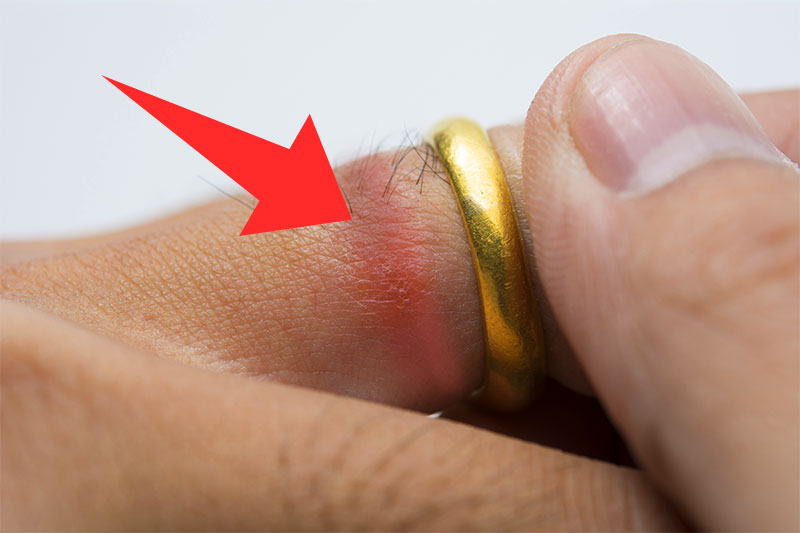
Likewise, having healthy skin will necessarily portray that your inner health conditions are fine. But sometimes external “enemy attack'” may cause some damage to the “fort walls” even if the inner atmosphere of your “body fort” is peaceful and healthy! These attacks are caused by skin irritants which appear in various forms.
The most common skin irritants include (#3 will blow your mind):
#20 – Soap
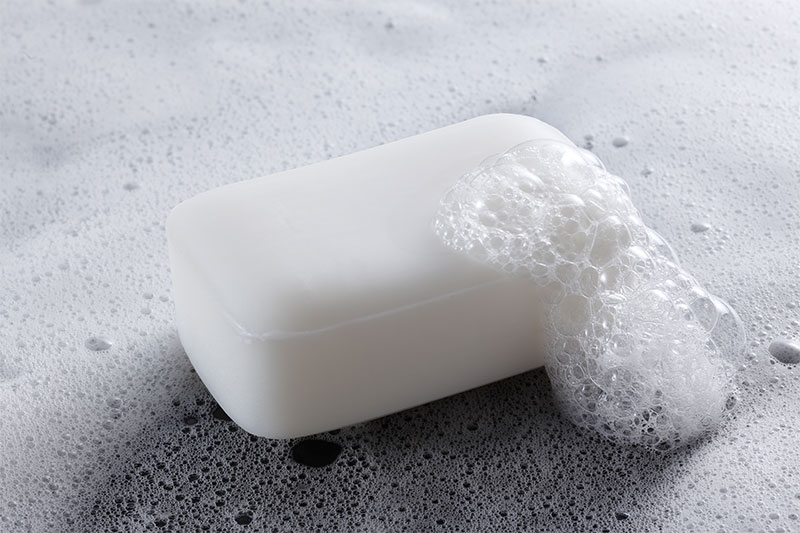
The excessive use of soap and water depletes the skin’s natural oils needed to keep your skin soft and elastic. Initially, you may notice dry, chapped skin. But if it persists and goes without treatment, your skin may develop symptoms like cracking or bleeding. If you suspect your soap is drying out your skin or making you itch, be sure to rinse well each time you wash. Also, consider using a different body cleanser such as a mild cleansing product. Other known skin irritants are dishwasher soap, bubble bath, and body washes.
#19 – Bugs and Bug Repellents
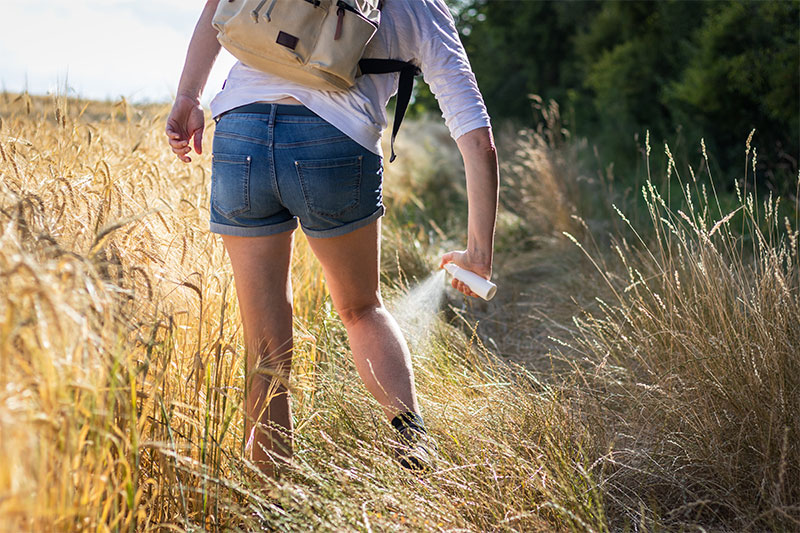
All bug bites and stings can produce allergic reactions ranging from a mild swelling and itching to a violent rash with blisters or sores. Bug repellents are also potential skin irritants. These products usually contain N-diethyl-meta-toluamide (DEET) and other chemicals known to be effective at preventing bites and several types of insects. The Environmental Protection Agency recommends sparing use, washing it off thoroughly when you return indoors and discontinuing use if you have any adverse reaction.
#18 – Latex
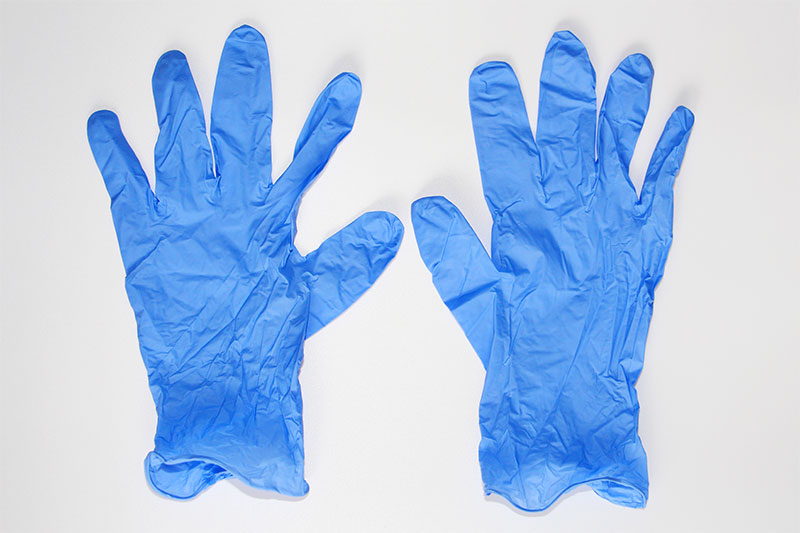
Some people are hypersensitive to latex, a natural rubber found in everything from gloves to condoms. If you are sensitive to latex, you may experience welts under a bra strap or elastic waistband. Also, people who are allergic to latex may cross react to tropical fruits such as bananas and kiwis.
#17 – Polymorphous Light Eruption (PMLE)
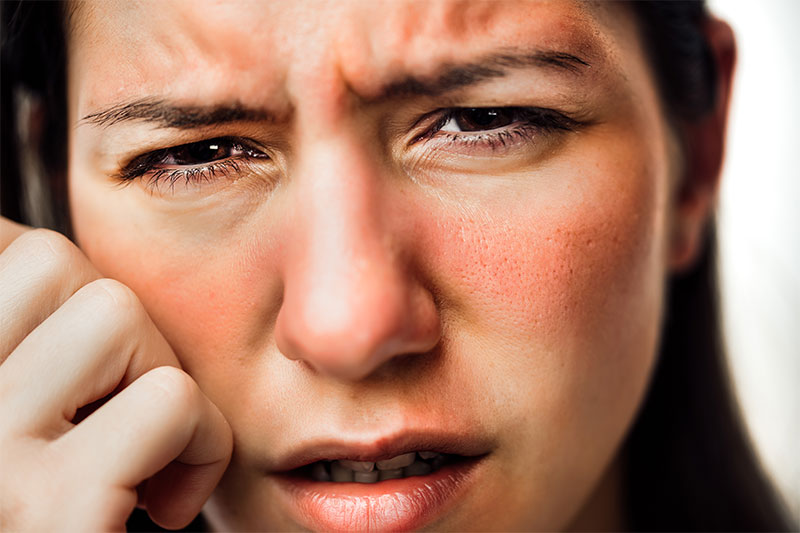
It is a common rash that occurs as a result of sensitivity to sunlight (photosensitivity). Up to a day after an episode of intense sun exposure – usually in the spring or early summer -, you may notice an itchy, red rash. The spots occur most often on the front of the neck and chest as well as the on arms and thighs. PMLE usually resolves on its own within two to three days, although the condition can recur and often becomes worse the following spring or summer. In the meantime, limit sun exposure.
#16 – Tinea Versicolor
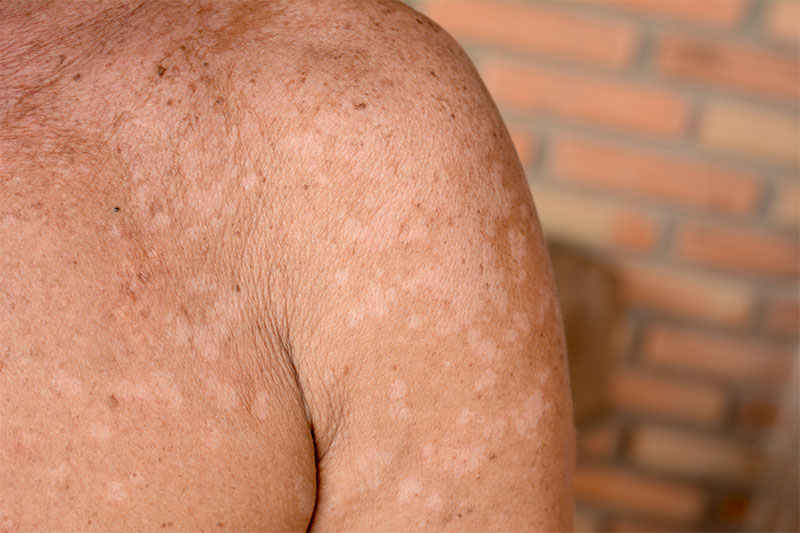
It is a common fungal infection that gives birth to small patches of discolored skin. Warm, humid weather supports this infection. The white or tan itchy patches may become more noticeable after sun exposure. The back, chest and upper arms are the more vulnerable areas of the body. Treatment options include OTC antifungal creams, lotions or shampoos.
#15 – Household Cleaners
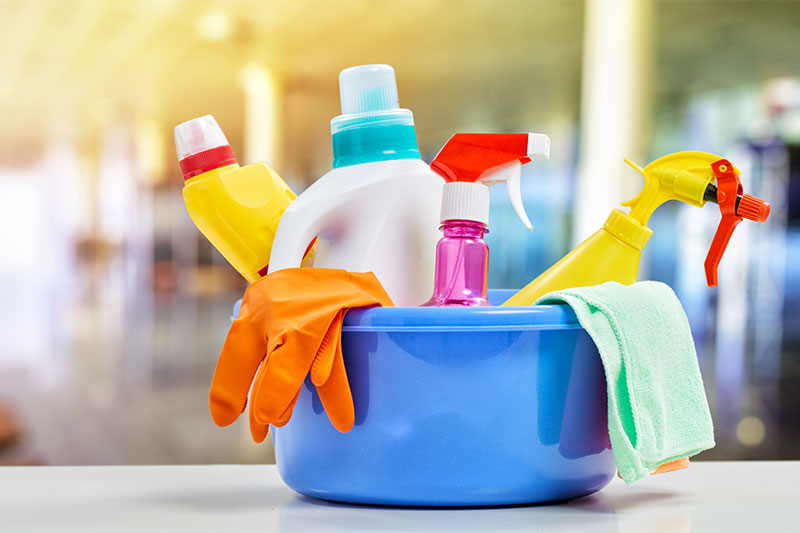
Most household chemicals, such as cleaning products, have clear messages on their labels, like “do not swallow” and “avoid contact with eyes”. Many of these products can also irritate, or even damage, your skin. You can avoid exposure by wearing protective gloves while you’re using the products. Some of the household cleaners include window cleaners, all-purpose cleaners, laundry detergent, drain cleaners, dish detergents, toilet disinfectants and furniture polish.
#14 – Detergents
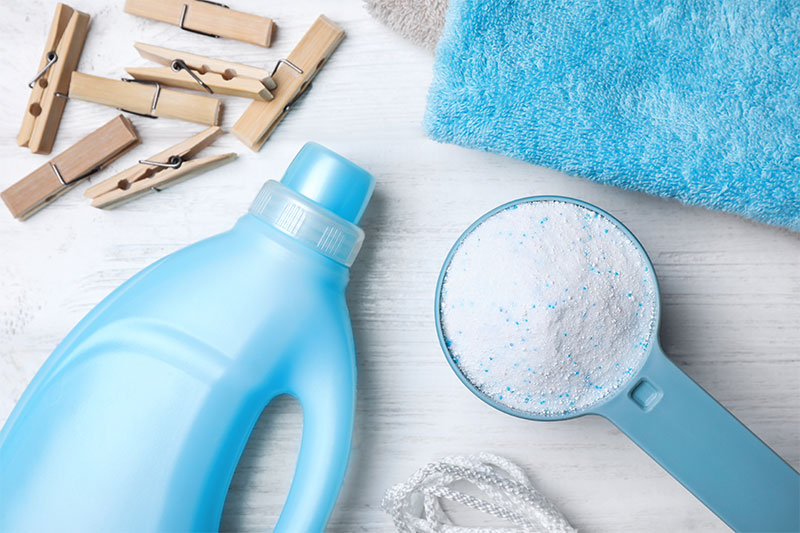
Laundry detergents and fabric softeners can have caustic affects with prolonged exposure to your skin. Laundry detergent includes ingredients such as surfactants, builders, enzymes, chlorine bleach, oxygen bleach, whiteners and fragrance. The most notable irritants are the dyes and fragrances, which are left on clothes even after they are rinsed. These culprits can produce itching and rash for people with sensitive skin or with specific dye or fragrance allergies.
#13 – Heat Rash, Miliaria
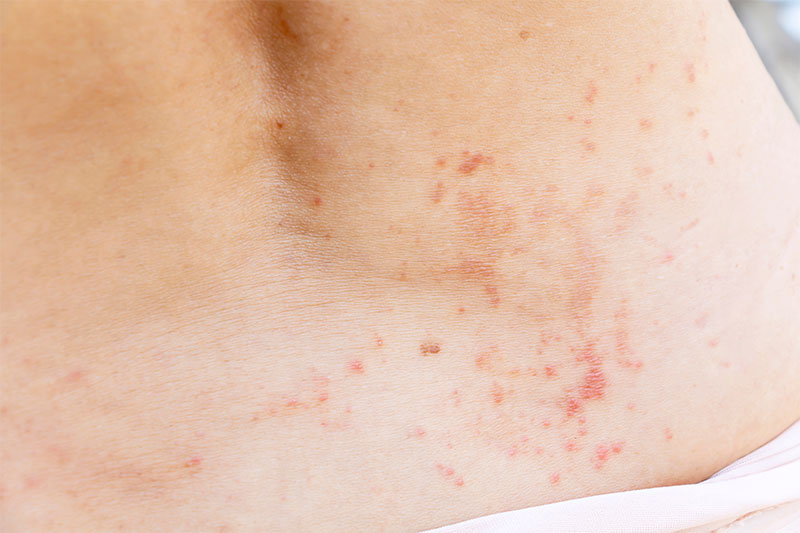
Summer and its heat can cause sweating and the related skin problems. Heat rash develops when the sweat ducts become blocked and perspiration is trapped under your skin. Miliaria rubra, one type of heat rash, appears as red clusters of small blister-like bumps that can produce a stinging sensation. Miliaria crystallina, another type of heat rash, appears as clear, fluid-filled bumps that produce no other signs or symptoms. Heat rash is most common in skin folds and wherever clothing causes friction. Heat rash isn’t serious and usually resolves quickly when the affected area cools. In the meantime, reduce sweating by staying in an air-conditioned space or using fans to circulate the air. Wear lightweight clothing and limit physical activity.
#12 – Clothing
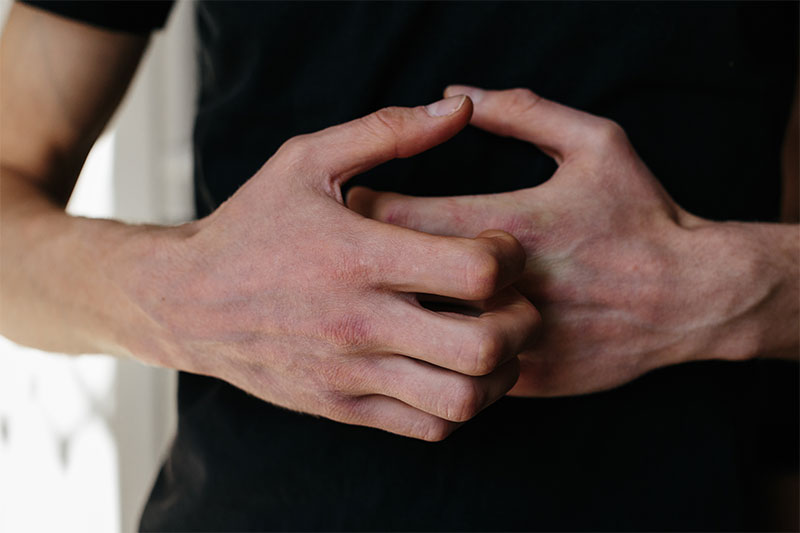
Clothing, especially rough fabrics like wool, can be problematic for individuals who suffer from a skin disorder called atopic dermatitis, the most common form of eczema. The American Academy of Dermatology estimates that 10 to 20 percent of children and 1 to 3 percent of adults develop this condition. There are several factors that make some people more susceptible to irritation from wool, according to Columbia University’s health service department. Thinner skin is more sensitive, and therefore, people with thin skin find wool more uncomfortable. Age is also a factor. Younger people have thinner skin and so they may be more sensitive to wool fabric. If you suspect that your clothing fabric is causing itching, irritation, or a rash, then you should think of keeping your cotton and cotton-poly fabrics in your wardrobe!
#11 – Essential Oils
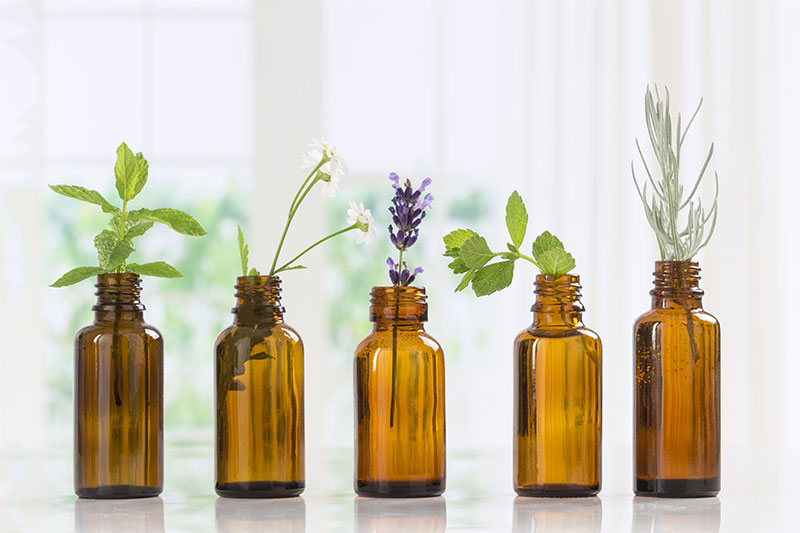
Dermal or skin sensitization can occur when certain essential oils (even in diluted form) are applied to the skin and the skin normally reacts producing effects like rashes, blotches and itching. In some cases, blistering can occur. Some of the common oil irritants are basil, birch, cassia, clove, cinnamon, lemongrass, oregano, peppermint, pimento berry, pine, red thyme, and winter green. If you have never used a specific essential oil and think that your skin may be irritated by it, do a skin patch test before using it.
#10 – Waxing
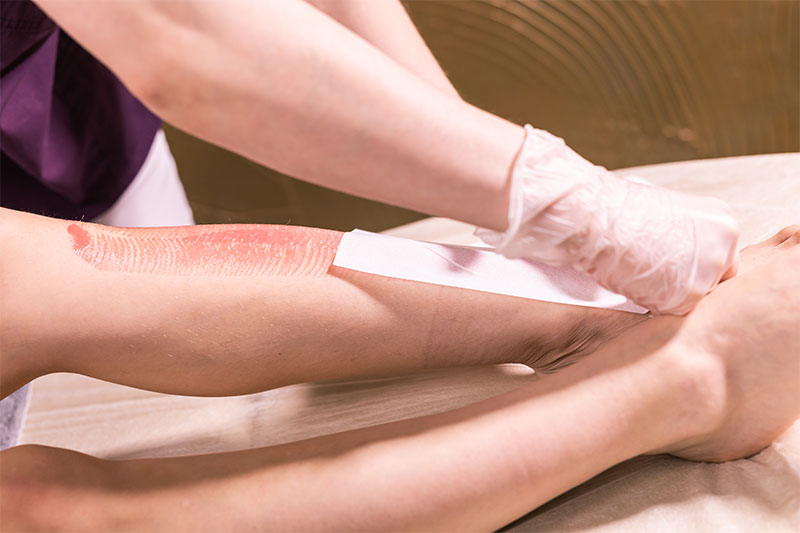
Removing the hair by waxing can cause trauma to the skin and other factors such as having sensitive skin or taking certain medications may exacerbate skin irritation from waxing as well. Waxing with already sensitive skin is likely to cause further skin irritation.
#9 – Swimmer’s Itch
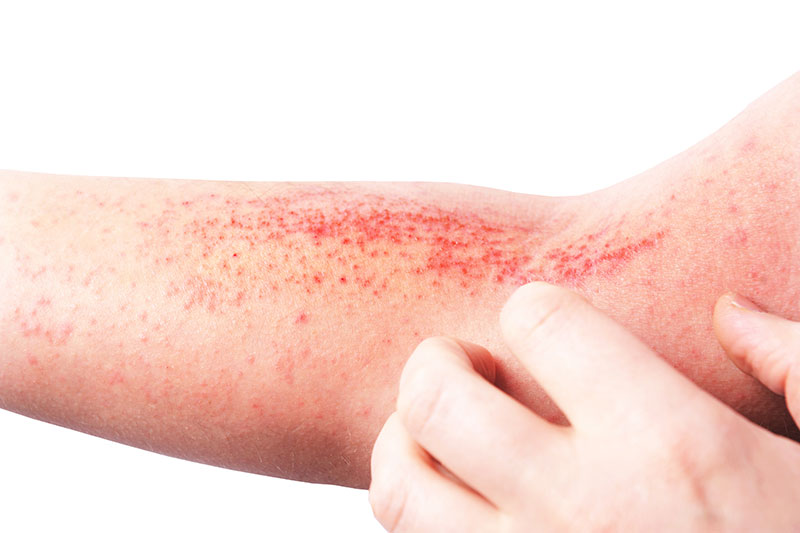
Swimmer’s itch is an itchy rash caused by certain parasites that normally live on waterfowl and freshwater snails. On warm, sunny days – especially in calm freshwater lakes or ponds – these parasites can be released into the water. While you swim, the parasites may burrow into your skin. The parasites will die soon and you will be left with itchy, red, raised spots on your skin.
#9 – Fragrance
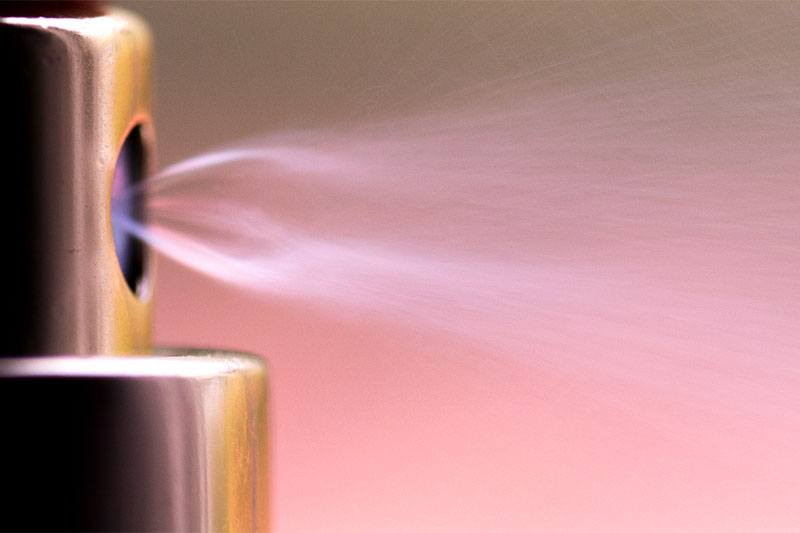
Fragrance allergies are common occurrences. But it is very difficult to find out the offending chemical because as many as 5000 fragrances make use of these chemicals in combination. Some people may get affected with skin rashes or hives from musk while some others may react adversely to vanilla scents.
#7 – Creams

Extra care with creams and skincare products must be taken if you experience stinging or burning when applied. These products may include wrinkle creams, cleansers, and skin peels. Check the labels carefully for some common irritants such as ascorbic acid, paraben preservatives, and alpha-hydroxy acids such as glycolic acid, malic acid, and lactic acid.
#6 – Sunscreen
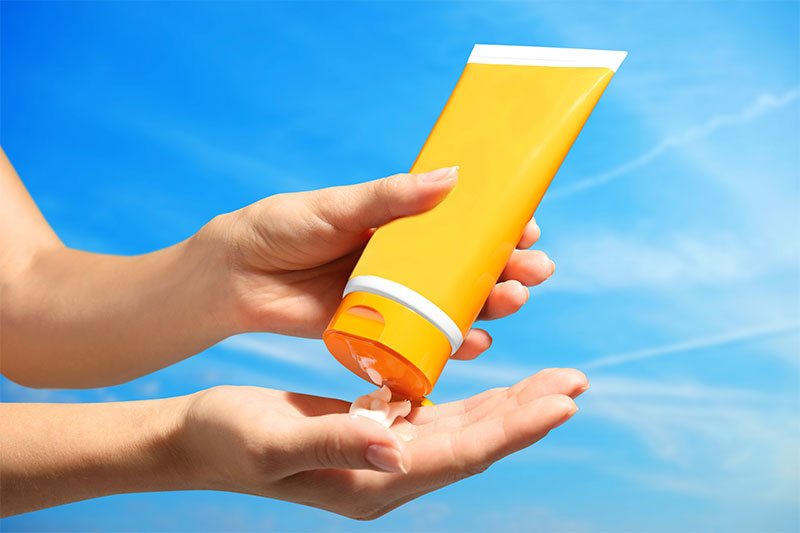
Sunblock usage is recommended to protect your skin from harmful UVA and UVB radiation. Physical sunblocks can include zinc oxide and titanium oxide, which reflect all ultraviolet (UV) radiation before it gets to your skin.
Sunscreen has specific chemicals that could provoke allergic reactions in some people. One of the most common allergic reactions to sunscreens is triggered by para-aminobenzoic acid or PABA. If you experience a rash after using a sunscreen that has PABA, stop using it and try one of the “PABA-free” sunscreens to see if the allergic reaction was prompted by the PABA.
#5 – Cosmetics
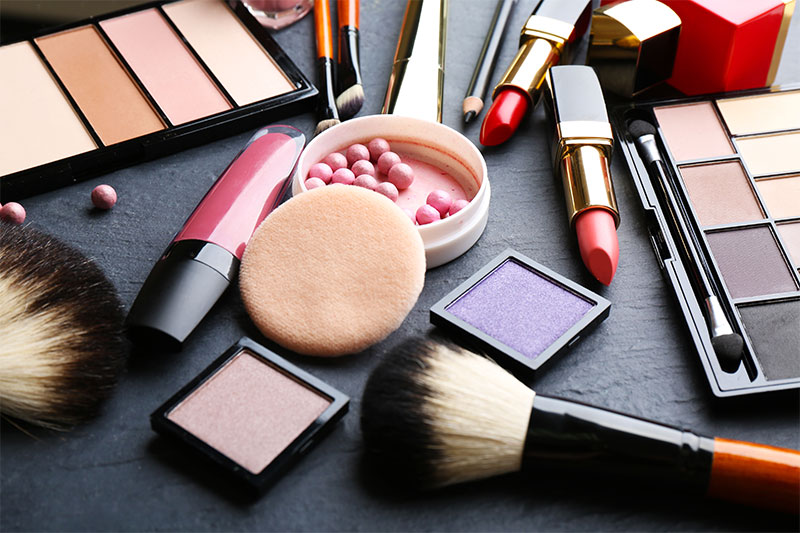
Lotions, deodorants, acne treatments and other products can cause skin irritation if you have an allergic reaction to the chemicals or if the chemicals break down into potentially hazardous substances. Cosmetics can contain strong active ingredients, like alpha-hydroxy acids, that can irritate or even damage the skin if they are not paired with proper use and protective products such as sunscreen. Other potential culprits are additives, such as colors, fragrances and preservatives. For some people, these can also cause allergic reactions. Test each new cosmetic product carefully and use it as directed. Discontinue using any product if you have skin irritations or other adverse reactions.
#4 – Food
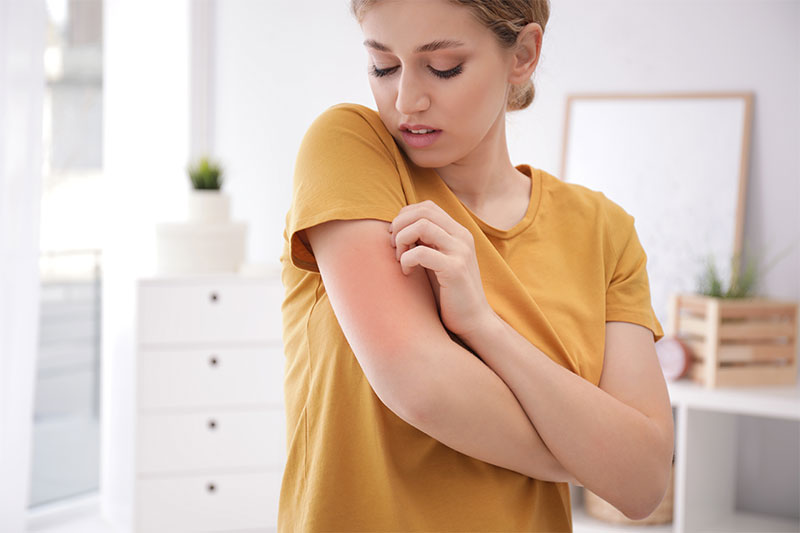
There are a number of foods that can potentially cause a skin rash or irritation. People can react to foods in different ways. Many of these irritations are fungus infections that can affect all areas of the body, including the mouth. Most people who get these rashes usually have a compromised or weakened immune system. But skin reactions can even be caused due to food handling. Handling acidic foods or spices can cause you irritation if there are cuts or cracks in your hands.
#3 – Nickel
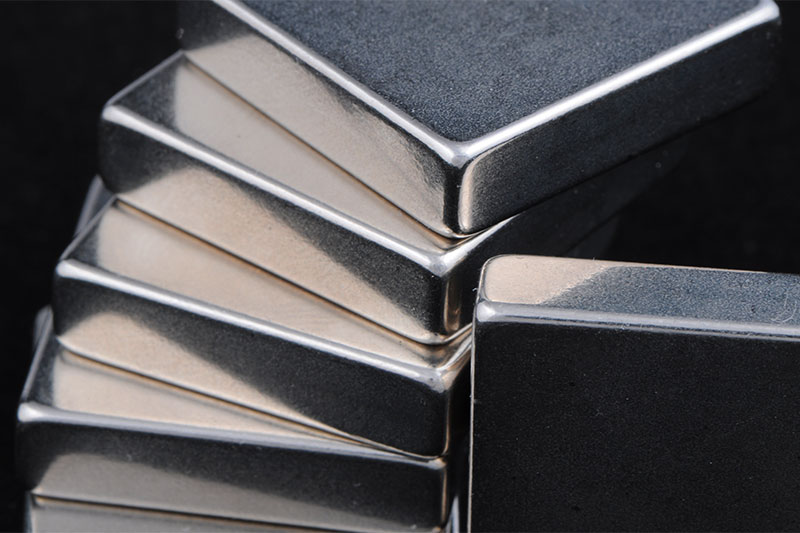
Nickel is a common allergen. It may be spotted in zippers, costume jewelry, watchbands and other items of everyday use. Reactions to vitamins and the hardware used to repair a limb fracture may be seen in individuals with severe form of allergy.
#2 – Plants

There are several plants that can cause light to severe inflammation of the human skin, medically known as dermatitis. The magnitude of irritation varies with the tolerance level of each individual. Although most of these skin irritations are temporary and superficial and do not need medical attention, but some can be toxic and persistent, resulting in serious health aggravations.
Poisonous Plants
They carry a toxin known as urishiol in their sap. Coming into contact with these plants causes rashes and blisters on the skin. The most common poison plants are poison ivy, poison oak and the sumac tree.
Allergenic Plants
They do not affect everyone that comes into contact with them. However, they can trigger severe allergic reactions like asthma and hay fever in some people. Examples are orchids, tulip bulbs, chrysanthemums and dahlias.
Stinging Plants
They are less serious and may cause only temporary toxic reactions when their nettles are touched. Some common skin irritants are poinsettias, pencil trees, daffodils, hyacinths and buttercups.
Thorn Plants
These plants cause only scratches. Examples are roses and berry bushes. Black and honey locust trees can also inflict a severe infection.
#1 – Lyme Disease

Lyme disease is a tick-borne illness that causes a distinctive rash, flu-like symptoms and aching joints. The rash begins as a small, red bump that appears within a few days to a month after a tick bite. Over the next few days, the redness expands and may resemble a bull’s-eye. Fever, chills, fatigue, headache and body aches may accompany the rash.
A gatekeeper or a security guard, being the external protective “barrier” of a building, has to undergo troubles or irritations from time to time! The skin, being the external protective sheath of the body, is made to tolerate such attacks! And you, as a “proud” owner of your skin, will need to ensure its ultimate well-being by keeping it “irritant-proof”!


